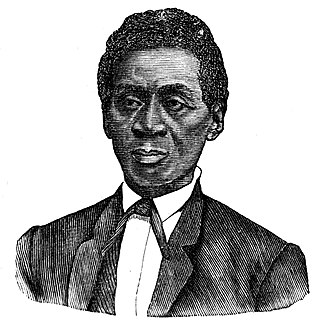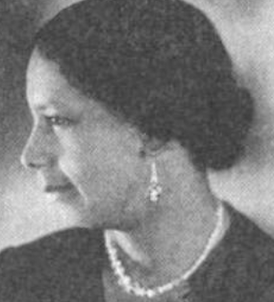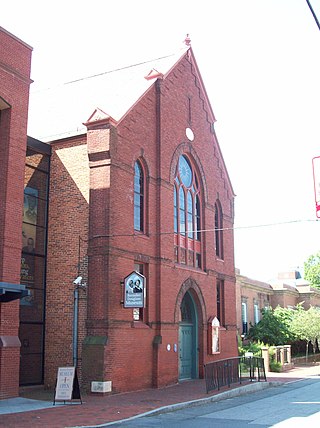
Mount Auburn Cemetery, located in Cambridge and Watertown, Massachusetts, is the first rural or garden cemetery in the United States. It is the burial site of many prominent Boston Brahmins, and is a National Historic Landmark.

Old Saint Paul's Cemetery is a cemetery located in downtown Baltimore, Maryland, United States. It is noted for the several important historical figures that are interred in its grounds.

Mount Vernon is a neighborhood of Baltimore, Maryland, located immediately north of the city's downtown. It is named for George Washington's Mount Vernon estate in Virginia, as the site of the city's Washington Monument.

Samuel Green was a slave, freedman, and minister of religion. A conductor of the Underground Railroad, he was tried and convicted in 1857 of possessing a copy of the anti-slavery novel Uncle Tom's Cabin by Harriet Beecher Stowe following the Dover Eight incident. He received a ten-year sentence, and was pardoned by the Governor of Maryland Augustus Bradford in 1862, after he served five years.

Lillie May Carroll Jackson, pioneer civil rights activist, organizer of the Baltimore branch of the NAACP. Invariably known as "Dr. Lillie", "Ma Jackson", and the "mother of the civil rights movement", Lillie May Carroll Jackson pioneered the tactic of non-violent resistance to racial segregation used by Martin Luther King Jr. and others during the early civil rights movement.

The Banneker-Douglass-Tubman Museum, formerly known as the Banneker-Douglass Museum, is the state of Maryland's official museum for African American history and culture. Located at 84 Franklin Street, Annapolis, Anne Arundel County, Maryland, the museum is housed within the former Mt. Moriah African Methodist Episcopal Church.

Mount Gilboa Chapel is a historic African Methodist Episcopal Church located in Oella, Maryland, United States. It is a small stone church measuring 28 feet by 42 feet, built about 1859 by free African Americans. The front façade is ashlar masonry, but the sides and rear are of rubble.

Mount Vernon Place United Methodist Church and Asbury House is a historic United Methodist church located at 2-10 Mount Vernon Place, Mount Vernon in Baltimore, Maryland. The church "is one of the most photographed buildings in the city, completed in 1872 near the Washington Monument on the site where Francis Scott Key died in 1843. Its sanctuary seats 900 and its rose window is modeled after the one in the Notre Dame Cathedral in Paris."

Taylor's Chapel is an historic chapel located at Baltimore, Maryland, United States. It is a Greek Revival style chapel located in a quarter acre fenced-in plot, which also includes a graveyard, within Mount Pleasant Park in northeast Baltimore. The structure is a small, mid-19th-century country church, built of stone, covered with stucco, painted white, and has a gable roof. The interior features frescoes on the walls and ceiling, attributed by tradition to the Italian-American painter Constantino Brumidi. The frescoes are trompe-l'œil paintings of classical architectural detailing, including pilasters, panels, coffering, and ornaments. It has remained completely unaltered since its construction in 1853. It was built as a Methodist chapel by the Taylor family on their Mt. Pleasant plantation. In 1925 the City of Baltimore purchased the land surrounding the chapel and burial grounds for use as a public golf course. The site of the chapel and burial grounds was left to a self-perpetuating board of trustees. Taylor's Chapel is considered the mother church of St. John's United Methodist Church of Hamilton.

"Mount Winans" is a mixed-use residential, commercial and industrial neighborhood in the southwestern area of the City of Baltimore in Maryland. Its north, south and east boundaries are marked by the various lines of track of the CSX Railroad. In addition, Hollins Ferry Road running to the south towards suburban Baltimore County in the southwest and further connecting with adjacent Anne Arundel County to the southeast, draws its western boundary.

Mount Zion Cemetery/Female Union Band Society Cemetery is a historic cemetery located at 27th Street NW and Mill Road NW in the Georgetown neighborhood of Washington, D.C., in the United States. The cemetery is actually two adjoining burial grounds: the Mount Zion Cemetery and Female Union Band Society Cemetery. Together these cemeteries occupy approximately three and a half acres of land. The property fronts Mill Road NW and overlooks Rock Creek Park to the rear. Mount Zion Cemetery, positioned to the East, is approximately 67,300 square feet in area; the Female Union Band Cemetery, situated to the West, contains approximately 66,500 square feet. Mount Zion Cemetery, founded in 1808 as The Old Methodist Burial Ground, was leased property later sold to Mount Zion United Methodist Church. Although the cemetery buried both White and Black persons since its inception, it served an almost exclusively African American population after 1849. In 1842, the Female Union Band Society purchased the western lot to establish a secular burying ground for African Americans. Both cemeteries were abandoned by 1950.
Edgar Amos Love was an American bishop with the Methodist Episcopal and a civil rights spokesman. He is also noted as a founder of Omega Psi Phi, the first international fraternity founded at an HBCU.
Columbian Harmony Cemetery was an African-American cemetery that formerly existed at 9th Street NE and Rhode Island Avenue NE in Washington, D.C., in the United States. Constructed in 1859, it was the successor to the smaller Harmoneon Cemetery in downtown Washington. All graves in the cemetery were moved to National Harmony Memorial Park in Landover, Maryland, in 1959. The cemetery site was sold to developers, and a portion used for the Rhode Island Avenue – Brentwood Washington Metro station.
The African American Cultural Heritage Action Fund is a program formed in 2017 to aid stewards of Black cultural sites throughout the nation in preserving both physical landmarks, their material collections and associated narratives. It was organized under the auspices of the National Trust for Historic Preservation. The initiative which awards grants to select applicants and advocates of Black history is led by architectural historian Brent Leggs. It is the largest program in America to preserve places associated with Black history and has currently raised over $150 million.














